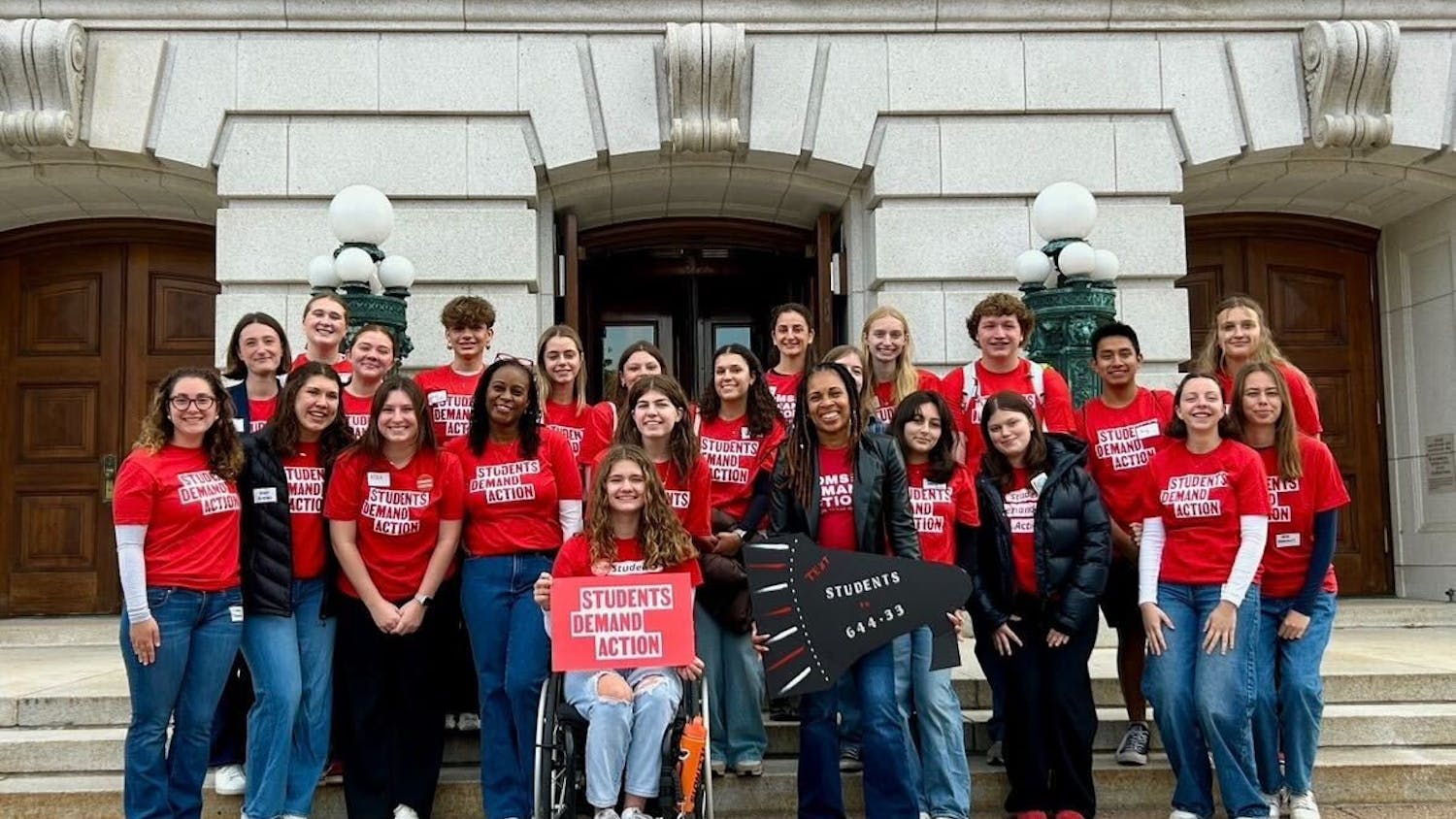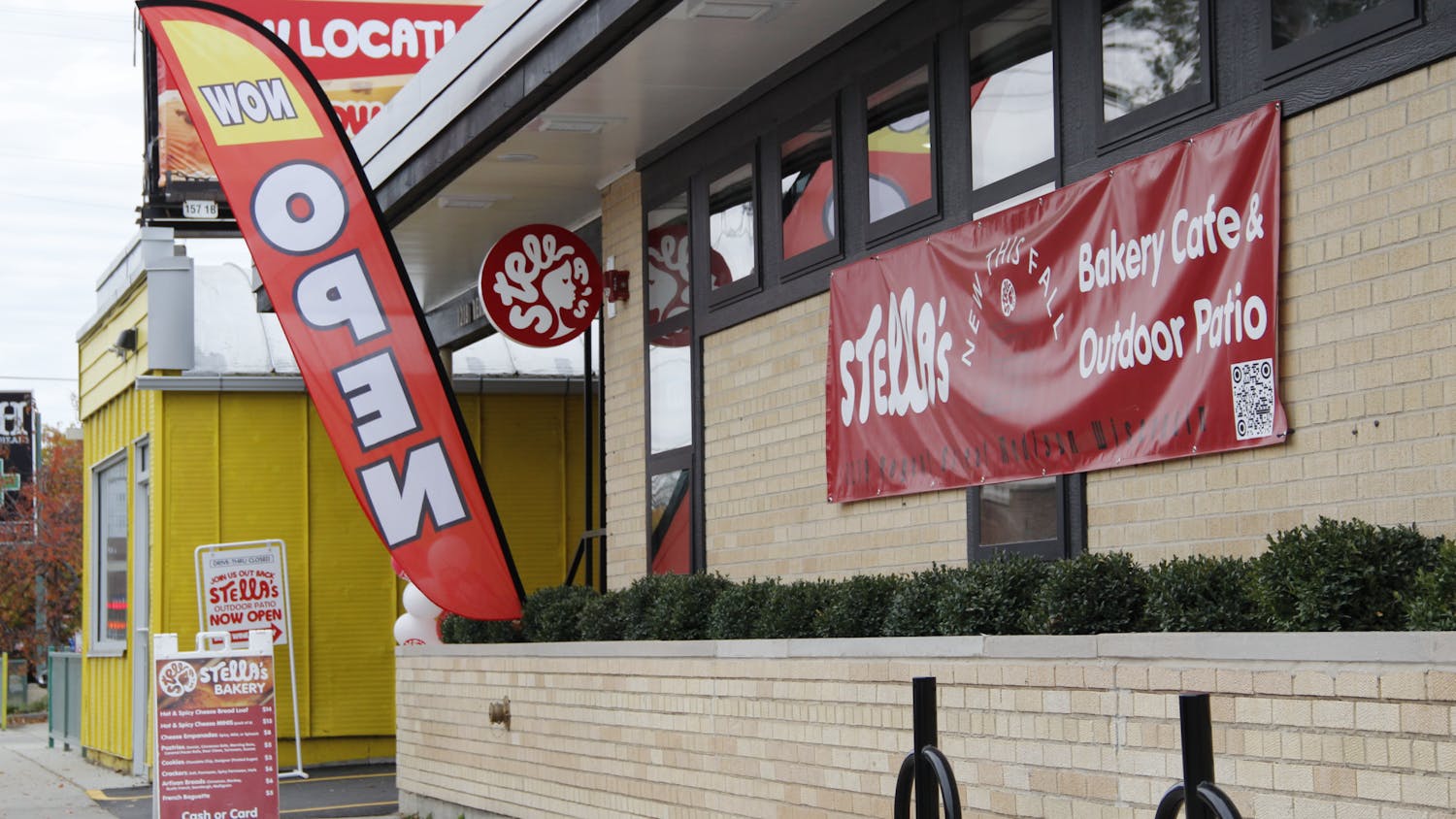As Wisconsin's projected budget deficit approaches $3 billion, the UW System is preparing for significant cuts in coming years.
""Increasingly … the states in this country are in dire economic straits and are finding it unaffordable to keep up with costs of public higher education,"" UW-Madison Chancellor Biddy Martin said at a forum last October.
UW-Madison must simultaneously maintain quality in its classrooms, keep tuition affordable and sustain further projected budget cuts. So how did the university come to be in this predicament?
Funding Shifts over the Years
General purpose revenue, the main type of funding the university receives from the state, has continued to increase over time. UW-Madison received $408 million and $476.5 million in the 2001-'02 and 2010-'11 academic years, respectively, in GPR.
These funds are divided into general program appropriations, which the university has the jurisdiction to distribute, and specific purpose appropriations, which the university must dedicate to certain costs like utilities.
Although the dollar value of GPR has increased, the UW System has actually seen a decrease in state funding as a percentage of its total revenue, from just over 25 percent in 2001-'02 to 17.3 percent in 2010-'11. This is partially due to an influx of funding independent of the state.
""Some of the state support for fixed costs such as utilities has gone up while support for our core mission, that is education and research, has gone down,"" Martin said. ""That means fewer positions and bigger classes.""
Cuts Affect Faculty Numbers
Vice Chancellor for Administration Darrell Bazzell, a key participant in allocating funds within the university, said every school and college on campus has had to endure budget cuts.
The College of Letters and Science, which teaches 65 percent of all credits at the university and 80 percent of freshman and sophomore credits, has lost between $9-10 million of funding over the last seven years, according to Letters and Science Dean Gary Sandefur.
The effects of this loss can be seen in faculty recruitment and retention.
""We're usually able to pay competitive starting salaries to new faculty, but new faculty also know that overall we have the second-lowest salaries in the Big Ten, or [lowest] among our peer institutions, so they feel their future salary trajectory is not going to be as good as it might be some other places,"" Sandefur said.
Political science, the most popular major on campus, has lost 5 percent of its faculty either to retirement or better offers.
""Political science got hit pretty hard and then we couldn't afford, with the budget constraints, to replace all those people at once, so we had to kind of do it over a period of time,"" Sandefur said.
Political science professor Charles Franklin said this disparity in salary creates a ""long-term penalty"" for professors who choose to stay at UW-Madison.
""Your salary relative to your peers in the rest of the world falls every year you stay here and don't get an outside offer and don't get a salary match,"" he said.
Increasing revenue from other sources like tuition, Franklin said, would benefit students by retaining the best professors.
As professors have left, Sandefur said, Letters and Science has tried to remain faithful to its core mission–research, instruction and service–by relying increasingly on instructional academic staff who are paid less than faculty.
However, Sandefur said that though individual classes taught by an academic staff member might be just as good as those taught by professors, students' overall academic experiences suffer because they cannot work with faculty members involved in research.
According to Martin, the budget cuts also affect whether students are able to graduate in four years because there are not enough spots in prerequisite courses for majors. Part of solving this problem, she said, is to bring in more faculty and staff.
Tuition Hikes: More to Come
In order to achieve its goals with less state funding, the university has come to rely more heavily on tuition revenue.
Between the 2001-'02 and 2009-'10 academic years, the university's revenue from tuition has increased from $225.3 million to $377 million. In this period, the cost of tuition and fees have risen steadily from $4,089 to $8,314 for residents and from $15,976 to $23,063 for non-residents.
Although the cost of higher education may strain family finances, UW-Madison has the second-lowest in-state tuition and fourth-lowest out-of-state tuition in the Big Ten.
The university's relatively small price tag, among other statistics, has been the basis for the Badger Partnership, the administration's plan for a new university-state relationship.
The Future
Martin outlined the Badger Partnership at a public forum in October. The Partnership aims to increase the university's autonomy from the state in making financial decisions. Included is the university's request for greater authority to determine tuition rates.
As it stands, the Board of Regents, a body appointed by the governor, determines how much students will pay. The university has no influence in the decision, Martin said.
Given this authority, she said she hopes to increase tuition to the median of UW-Madison's peer group. Increased tuition rates would in turn provide more funding for financial aid, she said. The median tuition amount is about $10,000 for residents and $25,500 for non-residents.
John Keckhaver is a Madison lobbyist whose work focuses on budget issues. According to Keckhaver, increasing tuition is not a long-term solution to budget shortfalls.
""The university system is always going to have new programs it wants to invest in, new facilities it wants to create, and in general, tuition increases [are not] the kind of money that lets you do those things,"" he said.
Martin, on the other hand, said increased flexibility in generating and spending revenue would save a substantial amount of money.
However, the cost of education has already increased under the Madison Initiative for Undergraduates, a program that uses funding from additional tuition charges approved by the Board of Regents to improve UW-Madison's learning environment and increase need-based financial aid.
With this funding, more than 6,000 students have received grants to offset additional tuition charges based on family income, and $5.1 million in need-based financial aid has been distributed, according to the MIU website. The university has also hired 11 new faculty members. Some of whom have begun to rebuild the political science department.
Martin said her goal is to provide a clearer picture of the future of revenue growth and reward faculty and staff for merit instead of distributing pay raises in tandem with all other state workers. UW-Madison would be a more diverse, efficient and service-oriented university, she said, if the new legislature and governor decided to enact this plan.
Martin cautioned, however, that the UW System will likely not get all it wants in negotiations with the newly elected state leaders.
As Gov. Scott Walker and the new legislature begin work on the next biennial budget this month, Martin will gain a better idea of how much of her plan will be executed.
The financial and academic futures of the university and the entire system promise to be a complex series of negotiations, compromises and cuts that will test the UW-Madison administration's plans to improve the quality and accessibility of education despite dim budget projections.
""The state now makes up 17.5 percent of our budget, but it has 100 percent control,"" Martin said.






